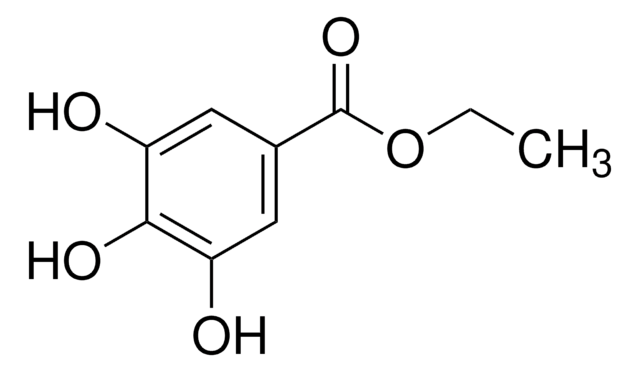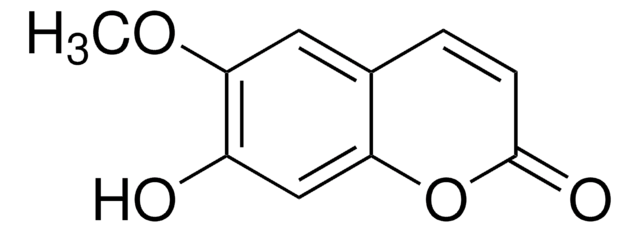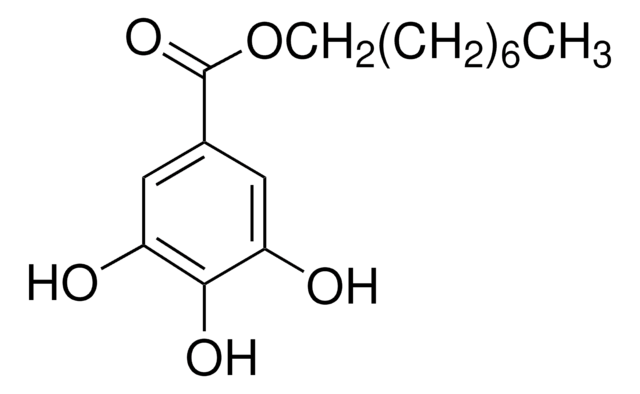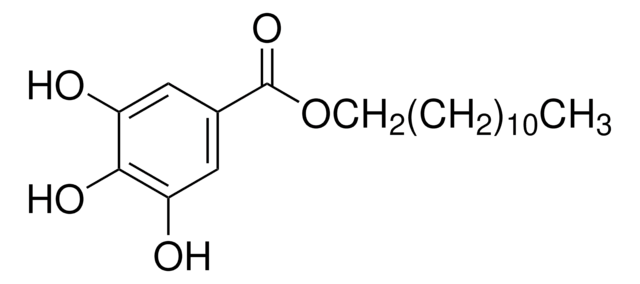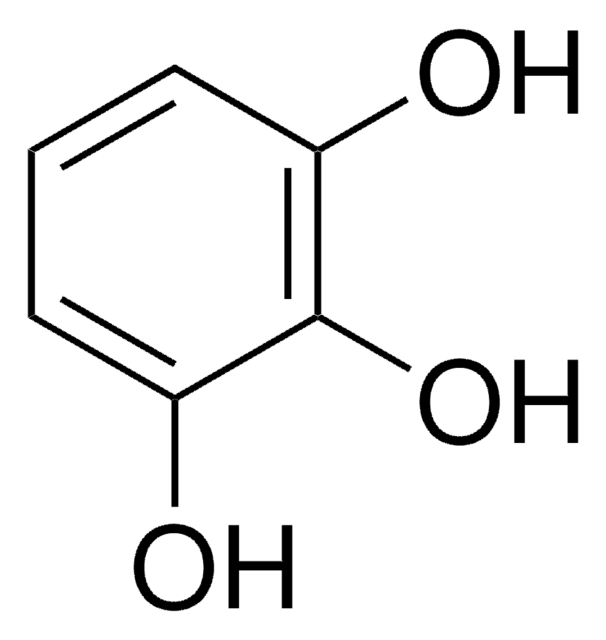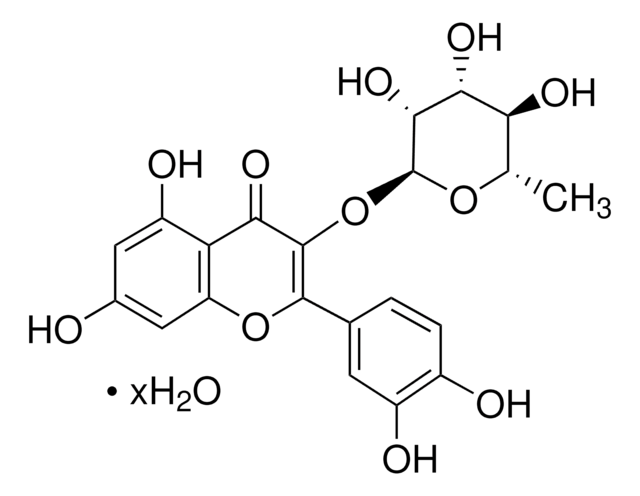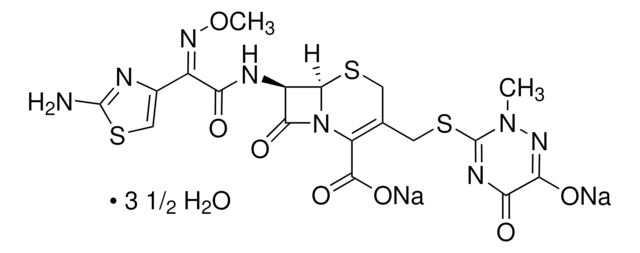48640
Ethyl gallate
antioxidant, ≥96.0% (HPLC)
Synonym(s):
3,4,5-Trihydroxybenzoic acid ethyl ester, Ethyl 3,4,5-trihydroxybenzoate, Progallin A
About This Item
Recommended Products
Quality Level
assay
≥96.0% (HPLC)
form
solid
functional group
ester
SMILES string
CCOC(=O)c1cc(O)c(O)c(O)c1
InChI
1S/C9H10O5/c1-2-14-9(13)5-3-6(10)8(12)7(11)4-5/h3-4,10-12H,2H2,1H3
InChI key
VFPFQHQNJCMNBZ-UHFFFAOYSA-N
Looking for similar products? Visit Product Comparison Guide
General description
Application
- Wound healing enhancement: Ethyl gallate, isolated from Caesalpinia mimosoides, demonstrated significant effects in promoting cutaneous wound healing. This discovery supports its potential application in therapeutic treatments for skin regeneration (Bhat et al., 2023).
- Pharmacokinetics in ethanolic extracts: A study involving ethanolic extracts of Terminalia chebula, which include ethyl gallate, detailed the pharmacokinetics of these active compounds in rats, providing critical data for pharmaceutical applications and drug development processes (Yao et al., 2023).
- Ethnopharmacology research: Research on Rubus idaeus, a source of ethyl gallate, covered extensive ethnobotany, phytochemical, and pharmacological aspects, offering insights into traditional uses and modern applications, highlighting its potential in ethnopharmacology (Tao et al., 2023).
- Dermal applications: Ethyl gallate was used in a topical ointment from Caesalpinia mimosoides to attenuate dermal wounds. This application underscores its effectiveness in skin care and treatment strategies (Bhat et al., 2022).
- Neuroprotective effects: The Jingchuan tablet, which includes ethyl gallate, has been studied for its therapeutic role in treating ischaemic cerebral stroke, focusing on the HIF-1α/EPO/VEGFA signalling pathway. This research outlines its importance in neuroprotective strategies (Zhang et al., 2022).
Storage Class
11 - Combustible Solids
wgk_germany
WGK 2
flash_point_f
Not applicable
flash_point_c
Not applicable
ppe
Eyeshields, Gloves, type N95 (US)
Choose from one of the most recent versions:
Already Own This Product?
Find documentation for the products that you have recently purchased in the Document Library.
Customers Also Viewed
Protocols
HPLC Analysis of Polyphenols in Nero d'Avola Red Wine on Discovery® HS C18 (UV 280 nm)
Our team of scientists has experience in all areas of research including Life Science, Material Science, Chemical Synthesis, Chromatography, Analytical and many others.
Contact Technical Service